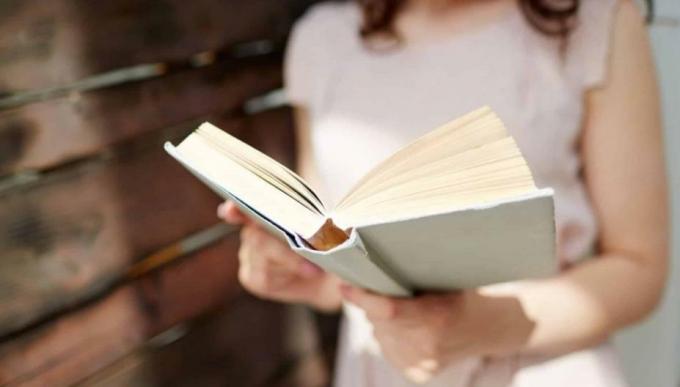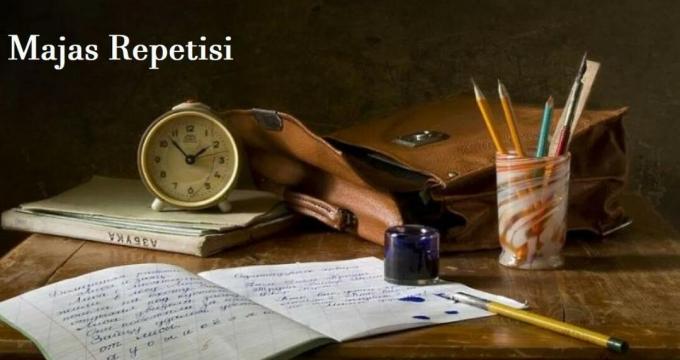Repetition Figure: Definition, Function, Characteristics, Examples
X
Advertisements
Loading...
As we have seen before, figure of speech has many varieties and types, one of which is repetition figure of speech.
Majas itself is a style of language in the form of figures of speech, like and parables that aim to beautify the meaning and message in a sentence.
On this occasion, we will discuss further about repetition figure of speech. Listen well yes.
list of contents
Understanding Repetition

Advertisement
1. Generally
Repetition figure of speech is a repetition of words or phrases in a literary work with the aim of emphasizing a meaning.
Repetition in a poem or song aims to create a rhythm.
2. According to experts
The following are some of the meanings of repetition figure of speech put forward by experts, including:
a. The Big Indonesian Dictionary (KBBI) version of the Ministry of Education and Culture
Repetition is a style of language or figure of speech that uses keywords and can be found at the beginning of a sentence to achieve a certain effect in conveying the meaning of repetition (play or other).
Advertisement
b. Rika Lestari in the book Summary and Discussion of Middle School Indonesian Language Problems
Repetition is a figure of speech that describes a thing by repeating a word or several words repeatedly.
c. Ainia Prihantini in Supercomplete Indonesian Figures, Idioms, and Proverbs
Repetition is a figure of speech in the form of repetition of the same word or group of words with the intention of attracting attention or having the character of affirmation.
From the above understanding, we can conclude that repetition figure of speech can also be interpreted as a way strengthen the meaning or intent by repeating words or parts of sentences that will strengthen the meaning the.
The Purpose and Functions of Repetition

The most common function is used to write poetry.
Where this type of figure of speech becomes a pure poetic tool and has the most important function of providing pressure and creating rhythm.
When a line/phrase is repeated in a poem/piece of literature, it can become real for the audience.
By using this figure of speech, poets can also make their ideas easy to remember and attract the reader's attention to certain ideas.
In addition, this figure of speech also has several specific objectives, such as:
- Various speech characters who use this figure of speech are generally to repeat single words or short phrases. But some people also repeat the whole sentence.
- Repeated information has been scientifically shown to increase the likelihood of changing people's minds. The power of persuasive repetition is one reason it's so common.
- Become a rhetorical tool that is commonly used to add emphasis and stress in writing or speaking.
- Helps to emphasize the thought of the important point to be conveyed.
- To develop style, tone, and rhythm.
The Characteristics of Repetition

Advertisement
The following are some of the characteristics of repetition figure of speech, including:
- The repetition of a sentence or word so that the work stands out and gets the attention of the listener or reader.
- Widely used in literature, books, literary works, written works, to speeches.
- Have an emphasis. Word repetition serves to highlight its importance in a text as well as an idea.
- Repetition is generally found in fiction and nonfiction writing, persuasive writing, creative writing, formal or informal writing. Because this figure of speech can be found in all styles, genres, and forms of literature.
- Usually has a natural rhythm in a sentence.
- Generally persuasive.
Types and Examples of Repetition Figure

The following are some types of repetition figureheads along with examples, including:
1. Epizeuksis repetition
Epizeuksis comes from the Greek epizeugnumi which means "to bond together".
For epizeuksis itself is a form of repetition in which a word or short phrase is repeated in succession without another word in between.
Words that use epizeuksis are loud and strong, which generally signify a lot of emotion being expressed.
The repetition of epizeuksis has two special characteristics, namely:
- The direct repetition of the same words/phrases in epizeuksis is blunt and forceful, but for the same reason it should be used sparingly.
- In speech, epizeuxis is generally loud, strong, and motivating. But not infrequently also has a function as an appeal.
Example of sentences:
Advertisement
- A voice whispered, "mother, mother, mother". I then felt confused when it sounded again.
- I will keep trying, trying, and trying so that I can achieve my goals
- Don't give up, don't give up, don't give up on things that you are really enthusiastic about getting
2. Tautoles repetition
This figure of speech uses words that are repeated and form a construction.
Example of sentences:
- Grandpa likes to eat betel, grandma likes to eat betel, brother and grandmother are the same.
- I hit me, you hit you, you and I fight.
- My clothes are new, my sister's clothes are new, my clothes and my sister's clothes are new.
3. Epanolepsis repetition
This figure of speech uses repetition of words at the beginning and at the end of the same sentence, with the following special characteristics:
- Emphasize certain words not only by repeating them, but also by placing them in prominent positions at the beginning and end of sentences.
- The term epanalepsis does not only apply to the first and last words of a sentence or clause. It can also refer to very close repetition at the beginning or end of a sentence or clause, as well as in two separate sentences.
Example of sentences:
- In the middle of the night you leave the house and come back in the middle of the night.
- Can't believe what you're all hearing. Say you don't believe it at all.
- This dream is yours. No one can achieve your dreams except you.
4. Mesodilopsis repetition
Repetition in this figure of speech occurs indirectly.
Repetition can be in several words or in the middle of a sentence or even in successive sentences.
Example of sentences:
- He still remembers, remembers and always remembers his friend's weakness.
- The host's meal was very polite, very neat, and very respectful of the guest.
- Dreams become dreams, dreams are worth waiting for, dreams must be pursued.
5. Other Kinds
In addition to the several types above, repetition figure of speech also has several other types, such as the following:
- Alliteration: The repetition of the same initial sound.
- Anadiplosis: Repeats the last word at the beginning of the next sentence.
- Anacephalaeosis: Summary of known facts.
- Antanaclasis: Repeating the same word but changing meaning.
- Anaphora: Repeating initial words.
- Antistrophe: Repeats the last word along with successive phrases.
- Antimetabole: Repeating clause, reversing the order of a word.
- Auxesis: Increase of importance.
- Assonance: Repeating the same vowel sound.
- Chiasmus: Two phrases with reversal in several places.
- Correctio: Correction to revise the meaning.
- Consonance: Repeats a consonant sound.
- Epanados: Repeats words in reverse order.
- Dysrhythmia: Breaking rhythmic patterns.
- Epizeuxis: Passionate repetition of words.
- Epistrophe: The repetition of the same last word or phrase.
- Homoioteleuton: A suffix that resembles adjacent/parallel words.
- Exergasia: Restate a point using a different word.
- Inclusio: Using a verb for a part with the same words.
- Hypozeuxis: Each clause has its own subject and verb.
- Parallelism: Repeated patterns within a sentence.
- Parachesis: Repeating the same sound with successive words.
- Parison: Pattern matching from across structures.
- Paregmenon: The repetition of words from the same root.
- Paroemion: Excessive alliteration.
- Parisosis: The same number of syllables in a clause.
- Polyptoton: Repetition in various forms.
- Paromoiosis: Similar sounds in two clauses.
- Repetitio: Repeats a word.
- Polysyndeton: Conjunction repetition.
- Synonyms: Recurring synonyms for amplification.
- Rhyme: Repeats sound at the end of a word.
- Tricolon: Three components that increase power.
- Tautology: Repeating meaning, not necessary.
